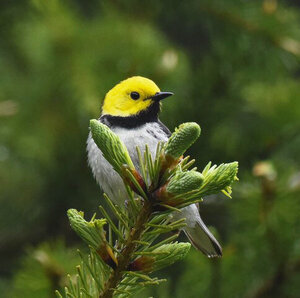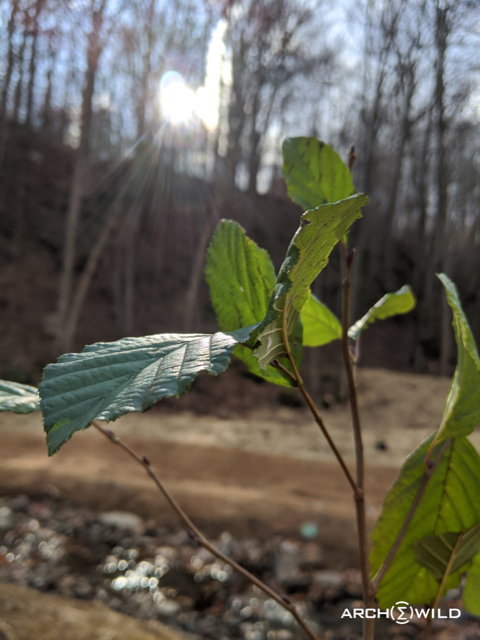Window Strikes and Native Plants / by Jim Cubie
Will Our Native Plant Efforts Do No Good?
By Jim Cubie jimcubie1@gmail.com
“You can’t fill the tub unless you plug the drain.”
“Everything is connected to everything else.”
“The windows in our homes are just as much a part of our ecosystem as the native trees we plant.”
“ This is critical strategic analysis” – leading scientist Dr. Doug Tallamy
The Challenge Bird-friendly backyard programs must succeed. They are the best option for increasing bird populations on a yard-by-yard scale. Bird-friendly programs will fail, however, if they do not start by protecting birds against what is killing birds in yards -- unprotected windows. We must recognize that windows are part of the backyard ecosystem. If we do not, the gains in bird population from bird-friendly backyards will be negated by bird deaths hitting windows.
Dr. Doug Tallamy, the leading science proponent of native plants, has commented, “ This is critical strategic analysis.”
The Solution Building a bird-friendly backyard must begin by removing what is killing birds in that yard. – unprotected windows. We have “to plug the drain before you can fill the tub.”
Not Optional, Essential Because window strike deaths “drain the tub” they cannot be one of a list of “good ideas” for homeowners. They must be step“# 1” - a required element of any successful avian centered native plant promotion program.

Small but critical gains, offset by small deadly losses Promoting native plants is based on sound scientific premises. The landmark research by Narango and Tallamy showed that if the native plant levels are above 70%, the ecosystem can produce a 20% increase in nestlings and achieve a sustainable population rate. That increase, however, is only about 2 nestlings more per nest.( Narango, Tallamy, 2018) Since the number of additional nestlings is small, window strike deaths (average 2-3 deaths per home annually), will negate the increased nestling production.(More detailed discussion attached.)
Science Based Solutions Are Available. Fortunately decades of research show us how to “plug the drain”. https://www.muhlenberg.edu/academics/biology/faculty/klem/aco/Bird-window.html The available scientifically validated bird window strike prevention systems are described in the “Consumer Guide to Window Strike prevention.” https://birdfriendlyyards.net/consumerguide/ The very popular window alert type systems are ineffective as normally applied.
Window Strike Prevention Is Affordable. The average plant installation landscape cost for a yard are between $1,400 and $5,000. Window strike prevention for an entire sunroom can be installed from between $30 (DIY) and $160 (commercial product, handyman installed.) See https://birdfriendlyyards.net/consumerguide/
The analysis can be downloaded from Doug Tallamy’s site at homegrownnationalpark.org or at birdfriendlyyards.net/….. The analysis is written by a retired attorney who is both a native plant and a window strike prevention advocate. Direct comments to jimcubie1 at gmail.com.
Background: A landmark study of chickadee nestling survival in 2018 in suburban habitats found that if the native component of local woody vegetation was increased above 70% native, there would be increase in nestling production and survival. Native plants produce more arthropods than exotic plants. These are the primary food source of nestlings. Only with this higher native plant level, and consequent increase in nestling survival rate, could the bird population be maintained (replacement level). The number of nestlings would increase by about two per nest if there was adequate native vegetation. It is about a 20% increase, but only two birds per nest. ( I have confirmed this analysis with the researchers, Desiree Narango, and leading native plant expert, Doug Tallamy. See note A below.)
In response, wildlife organizations have launched various initiatives, usually under the slogan “bird friendly yards,” to convince homeowners to modify their landscape so that more than 70% of the vegetation is native. (https://www.audubon.org/news/how-make-your-yard-bird-friendly-0; https://www.nwf.org/-/media/PDFs/Garden-for-Wildlife/Gardening-Tips/Bird-Friendly_web)
Thus, in my bird club and my community I have been working very hard to increase native plants in residential landscapes. I plead, “only if we get above 70% native vegetation, will we get the increase in nestlings we need to maintain the birds we love to watch and feed. Plant native and keep those nestlings alive.” Forty-five per cent of our bird club report planting natives. (See https://birdfriendlyyards.net for this innovative program.)
At the same time, I have also worked very hard to prevent window strikes deaths. With an average of just two (2) (or three) bird deaths per residence from window strikes annually, the loss of birds is staggering – hundreds of millions. I have urged club members and neighbors to stop the annual “two deaths per residence” from window strikes. I have installed systems for those who could not do it themselves, provided free systems, set up my sunroom to display the various windows strike prevention systems and much more. I have published a “Consumer Guide to Window Strike Prevention.” https://birdfriendlyyards.net/consumerguide/
Recently I was struck by the similarity of the numbers.
Two more birds per nest if we increase native vegetation.
Two less birds every year per home from bird window strikes.
Two more, two less = zero gain.
Of course, in a typical suburban neighborhood, there are more than chickadees nesting. Hopefully the cardinals, mockingbirds, wrens will also produce two more young per nest. Thus there will be 8 more nestlings. But there is a catch. The feeding range of chickadees is about 20,000 square feet. For the sake of discussion, assume that the feeding range of those other species is about the same. A typical tract home lot is about 5,000 square feet. Thus there will be four homes in that range, four times more glass and 8 deaths from window strikes.
If they are town homes, there may be 10 homes in that same feeding range for a much higher window strike induce mortality. Those 8-20 deaths from window strikes will only be offset if all of the homes increase their native vegetation above 70%. That is not likely.
Exact arithmetic computations are not possible when working from general mortality estimates (2 deaths per residence) to actual breeding ranges. They are illustrative. However, the overall conclusion is clear – if bird friendly yard programs do not start by preventing window strike deaths, the native plantings in those yards may result in little or no increase in bird population – the goal of bird friendly yards.
Yes, birds can have more than one brood – but it is also true that if one of the parents dies from a window strike during the feeding period, that the entire nest will fail.
The situation is worsened by the research that shows a correlation between window strike deaths and the presence of vegetation. Generally speaking, more vegetation will attract more birds to the vicinity of a home, causing window collision deaths (Sheppard, 2011). (Bayne et. al., 2012). (Kummer et al. 2016b) Glass panes that reflect surrounding vegetation present three times more risk than those that do not (Kummer et al. 2016b). Thus, where vegetation (native or not) attracts more birds, instead of 2, there may be 3-4 window strike fatalities per year. (Bird feeding also about doubles window strike deaths.)
No gain, or very little gain.
To put it simply, the backyard ecosystem includes deadly windows, as well as (we hope) very beneficial native plants. We must deliver the message that we have to do both – start by preventing window strike deaths and also plant native vegetation.
Preventing window strikes cannot be one more item on a list of “good things to do in your yard.” We must do both or our efforts to maintain bird populations by increasing our native plantings will fail, at worst, or at best make little difference.
“If you don’t plug the drain, you cannot fill the tub.”
This is not, I repeat not, NOT, NOT, NOT an argument against native plant promotion. It is instead a plea to the leaders of the birding community to realize that unless they integrate window strike prevention into our bird friendly yard campaigns, our native plant efforts will very likely fail. The windows in our homes are just as much a part of our ecosystem as the native trees we plant.
Of course, everything said above also applies to cats. If you have an outdoor cat, more native plants only mean more food for cats. You have to plug the drain.
“You can’t fill the tub unless you close the drain.”
“Everything is connected to everything else.”
Jim Cubie
Retired Attorney, Chief Counsel Senate Agriculture Committee, non-profit director and now active bird advocate
Jimcubie1 at gmail.com
Website: https://birdfriendlyyards.net
Text at: https://birdfriendlyyards.net/blog/
For scientifically validated, but practical bird window safety solutions: Download “Consumer Guide to Window Strike Prevention” https://birdfriendlyyards.net/consumerguide/
Note A:
(The principal researcher was Desiree Narango. Dr. Doug Tallamy was a co-author. “Nonnative plants reduce population growth of an insectivorous bird,: Desirée L. Narangoa,b,1,2, Douglas W. Tallamy, and Peter P. Marra PNAS October, 2018.)


